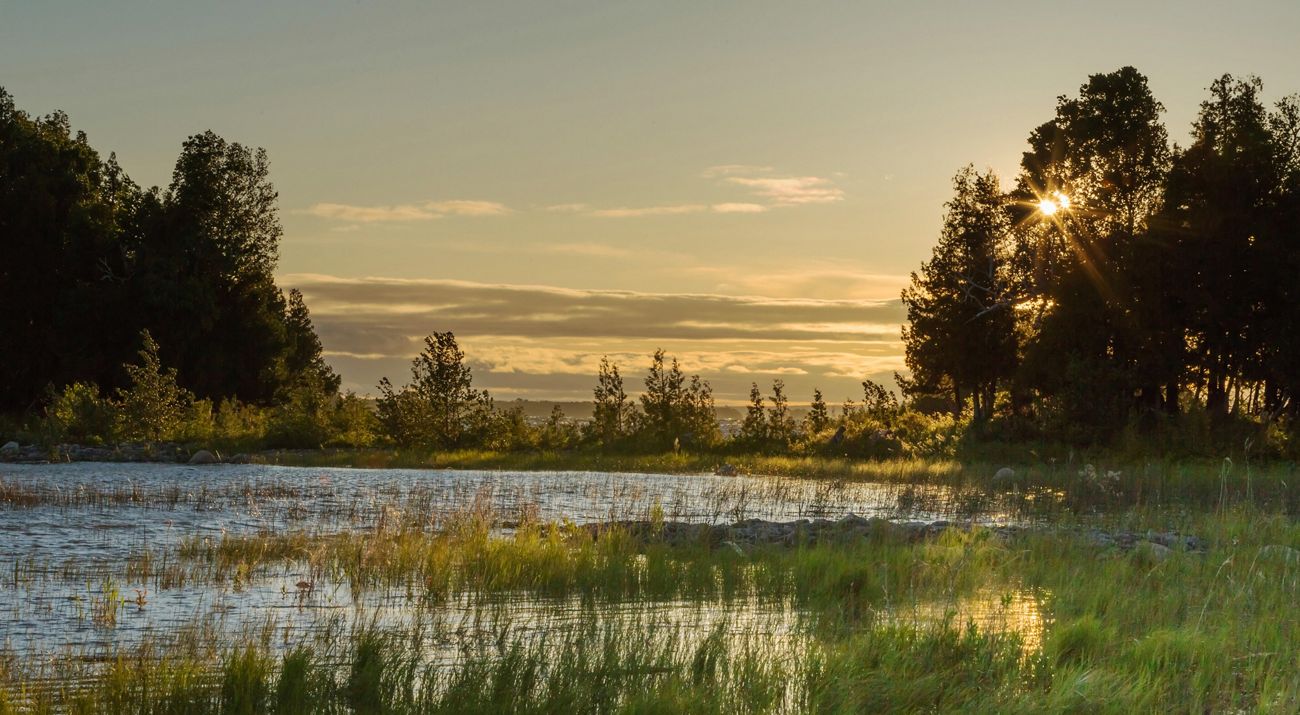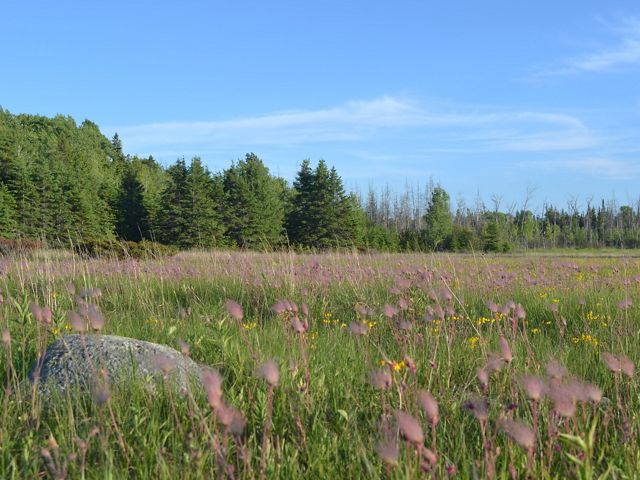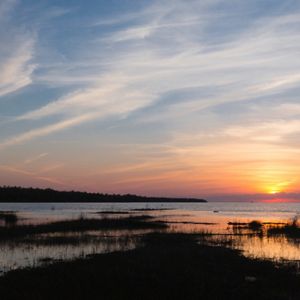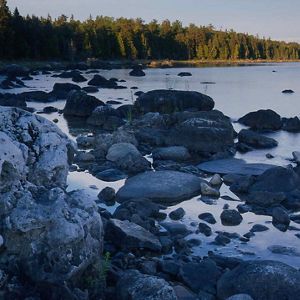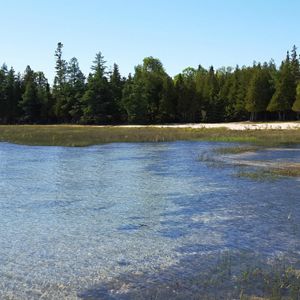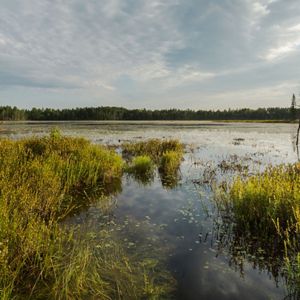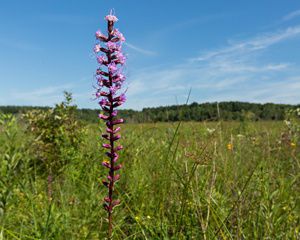Description
The 1,210-acre Maxton Plains Preserve protects the globally-significant alvar landscape and 10 Michigan state-rare plants, eight found in the alvars and two found in the forests. The alvars found on Drummond Island are the largest remaining high-quality alvars in North America. The Maxton Plains Preserve protects nesting and feeding habitat for the state-threatened osprey and potentially for grassland, forest and shorebirds.
Alvar is a Swedish term used to describe dry grasslands found on limestone pavements. The last glacier receded over 10,000 years ago, leaving no, or only a very thin (up to 10-inches), soil layer over limestone bedrock. Areas of pavement alvar are found in central Maxton. On the pavement alvars, the plants grow only in the bedrock joints where soil and sediment collect.
